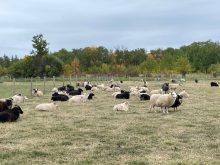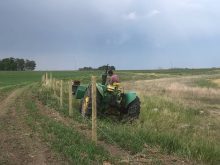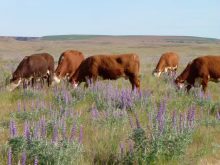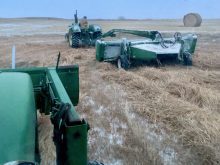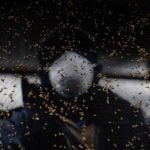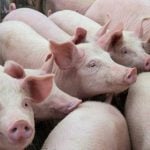Fencing — that is an exhausting and expensive subject. We have found that the price of rails and posts continues to go up while the quality of materials continues to go down. It makes the subject of trying to maintain or complete a corral fencing project very sensitive.
One of our projects that has been overdue for some time is completing a laneway around the back side of our existing corrals that would lead to two more pens that we could sort into, or use to keep animals separated. The laneway not only helps as a way to bring the cattle into the corral, but helps protect the tree line and keep the animals from damaging the trees and thus our windbreak from the west.
Read Also

Gentle treatments for pain in the neck
Heading toward year-end, people unknowingly tense up against the cold and busyness, causing neck pain that can often be treated with appropriate support and gentle mobility, athletic therapist Kathlyn Hossack says.
When considering materials, we decided to use sucker rod and used railroad ties. The railroad ties are big enough and since they came with wood preservative applied it will take a long time before they are too rotten to hold up a fence any longer.
Another bonus was that when Gregory bought them, they were very cheap. We use quite a few railroad ties in our various fencing projects. Often we are able to use the post hole auger and dig a hole slightly smaller than the tie and then pound the tie in with the post pounder. If we are not able to use the post pounder, for instance because of the tree limbs, then we dig a hole slightly larger than the tie and pack the dirt around the tie by hand.
Sucker rods work well
We have used sucker rod before when building our bull corral and have been very happy with how it worked. It is far cheaper than wooden rails and has the bonus of not rotting. We’ve had quite a bit of trouble with rails developing dry rot and the horses finding those soft spots and chewing on them. From there it doesn’t take long before the rails are broken and useless. By putting the sucker rod back together, with a little help from some WD40 and a wire brush to clean up the threads, the continuous run of iron is quite strong. The sucker rod also has some flexion to it and does not break easily.

One of the issues when we built our bull corral was how to secure the sucker rod to the posts. We ended up using some electrical conduit straps, and while most of the time they worked well, after a while some of the straps ended up stretching and breaking, allowing the sucker rod to sag and leaving a sharp piece of metal for animals to get cut on.
For this fencing project, Gregory was able to solve our problem of how to secure the sucker rod. He used some strips of metal that were about 3/4 of an inch wide and 1/8 of an inch deep. He cut them into five-inch pieces. John drilled a hole on each end, and then they used the hydraulic press to mould them into shape so that they would go around the sucker rod. We then used three- to four-inch screws to secure everything into place.
On the gateposts, to make sure that there were no sharp pieces for the horses to get cut on, we drilled a hole part-way into the railway tie and made sure the sucker rod was snug against the back of the hole. Thanks to the extra width of the tie, the sucker rod will not be pushed out of the hole if an animal should bump into it and there is no metal to rub on.




